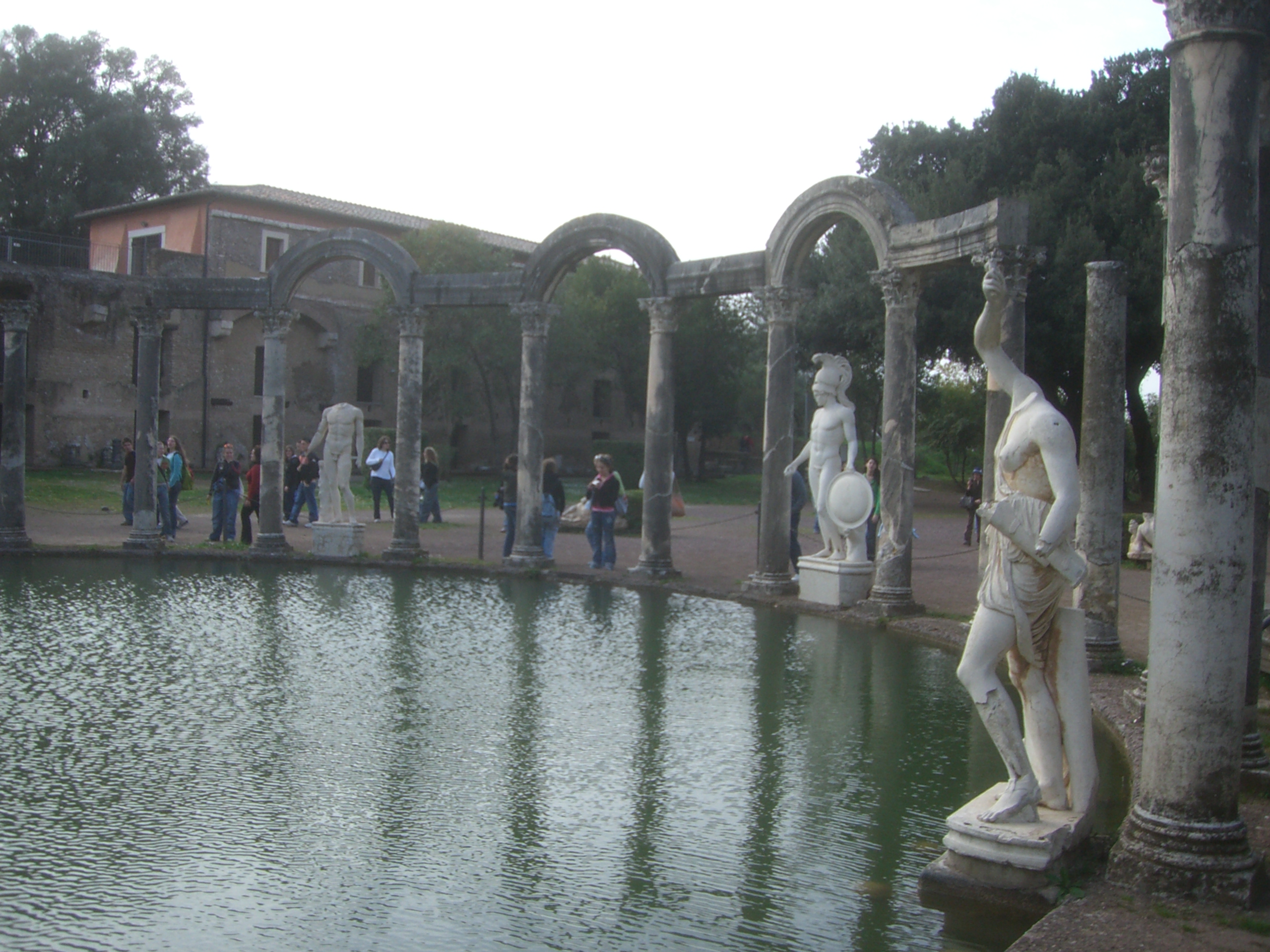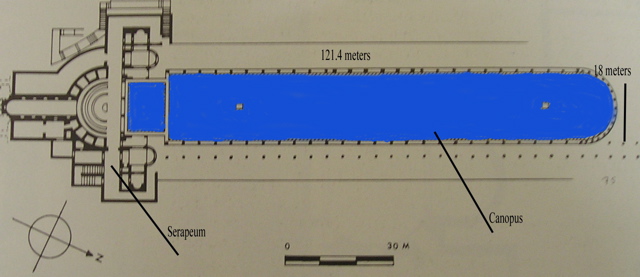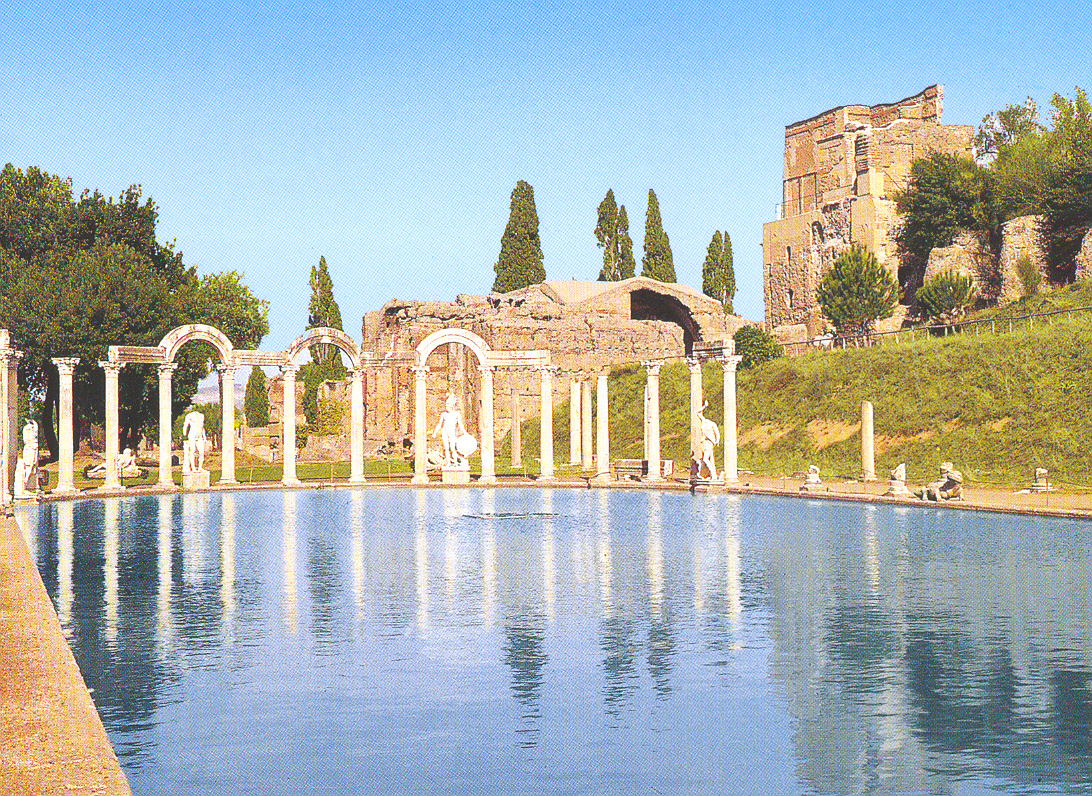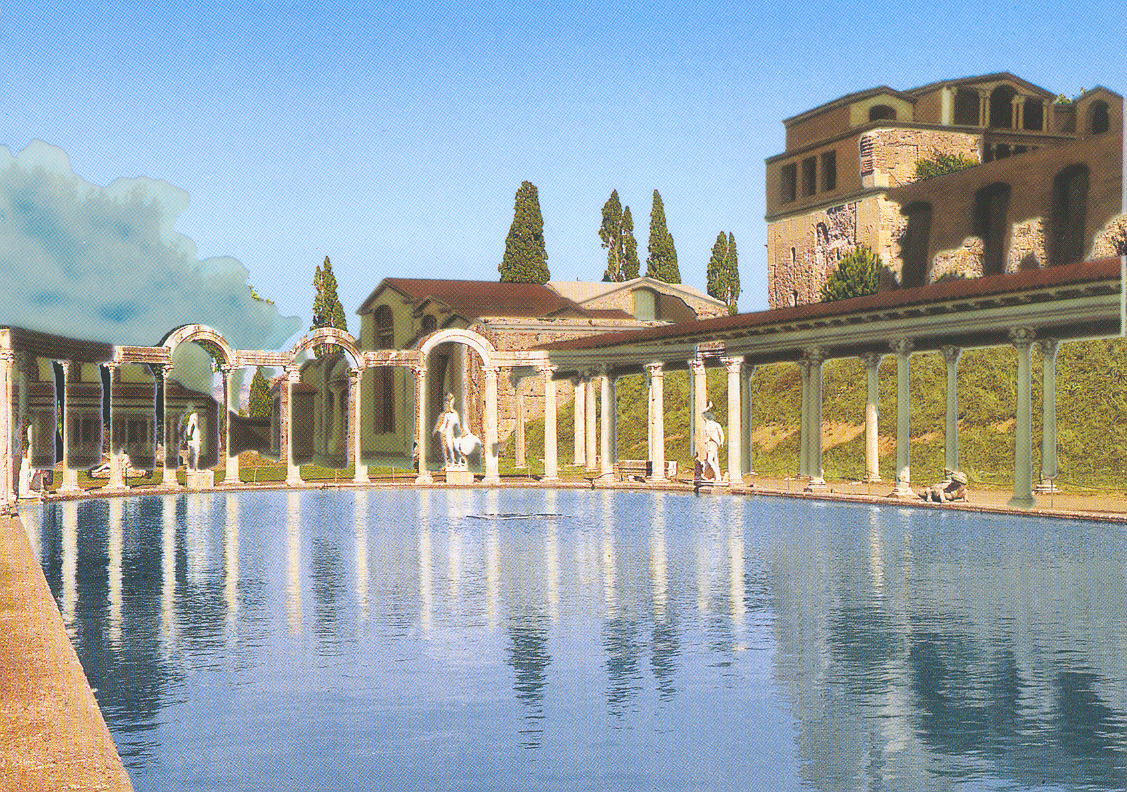
The Canopus
The statues of the Amazons in the ends with the statue of Hermes or Ares in the middle at the north west corner of the Canopus.
Image by: Luis Vidal
The famed Canopus is a pool representing a branch of the Nile, set in the center of a narrow artificial valley adjacent to the West Terrace (1). It was laid out in a long small valley enclosed by a buttress wall in the eastern side and substructures and a series of rooms for the service personnel on the opposite side. It gained its name from an island in the Nile in Egypt that the sanctuary of Serapis, the Underworld god (2). It was used for summer banquets, renowned for its nighttime parties and is dedicated to Serapis, an Egyptian who was worshiped by the Romans (3). The pool's construction is believe to have occur between 123-124 AD, evidenced by the pool's brick stamps (1).
It measures 121.4 meters long by 18 meters wide. Scholars believe the pool was surrounded by a colonnade of Corinthian order columns on the east and caryatids and sileni on the west. This colonnade was adorn by Roman copies of Greek sculptures from the age of Severus, Ares, Athena, Hermes and two Amazones (1). The water basin leads to a monumental building in the form of a shell-shaped grotto, decorated by niches, fountains and waterworks, which is believed to be the Serapeum. In front of the main building complex is a rectangular pool, lined on both sides by two pavilions, each with several barrel vaulted rooms. The building was lavishly decorated with mosaics in the vault and marble in the walls. In the back, there were several rooms paved with opus sectile, the distinctive mark of the emperor's presence. On the western side, frescoes are use to decorate a long room, probably used as a kitchen.This supports the theory that the Canopus was used ! for summer banquets. Finally, a water basin and small aqueduct that supply the waterworks was found in the hill behind the Canopus (3).
The Serapeum at the South side of the Canopus. Image by: Luis Vidal
Replica of Hermes statues. The original ones are housed in the museum next to the Canopus.
Image by: Luis Vidal
View of the north west side of the Canopus with the Roman replicas of Greek statues and the Corinthian columns.
Image by: Luis Vidal
Six remaining copies of the Carthyds that stood on the Southwest side of the Canopus.
Image by: Luis Vidal

Map of the Canopus
Image by: Dent, Craig and Meyers, Brian "Daily Updates" (original image from Sear, 180.)
The Canopus follows the tradition of Romans acquiring artistic tendencies from Ancient Greece. For example, grottos were part of the decoration of hellenistic royal palaces and in Roman times, they were very popular in small villas and private homes, as seen in Pompeii. Similar to the emperors' tradition of owning a villa, the half dome of the Canopus pass the "requirement" of having grottos in imperial villas. Although it reached monumental size, it resemble the Grotto of Sperlonga, which had a marble sculpture representing Ulysses blinding Polyphemus, with the fragmentary sculpture of Scylla found in the Canopus (3). Moreover, the use of Corinthian columns and Roman copies of Greek statues emphasizes this point.


This pair of pictures depicts the current and perceived reconstruction of the Canopus
Images by: Morselli, Chiara "Guide with Reconstruction of Villa Adriana and Villa d'Este"
The plan, architectural design and the decorations used in the site are from the Egyptian world and evoke the original Canopus. Most scholars agree that it is a representation of the navigable channel that linked Alexandria and Canopus. However, there has been a recent interpretation that sees Hadrian's Canopus as a symbolic representation of the Nile. In this version, the pool in the middle represents the Nile, the waterfalls are the cataracts, the exedra is the Nile's Delta and the basin would be the Mediterranean Sea. Moreover, the statues of the Amazones represent Epheseus while the Caryatids in the West are Athens (4). Although this hypothesis seems credible, it just emphasizes the importance of recreating places of Hadrian's travels in the design and construction of his imperial palace.
The Canopus stresses the importance of space in the Roman planning. Even though it is a common space in a palace with limited access, it sheds light on the artistic influence of the multiple provinces and cultures that compose the Roman empire. At the same time, one can see the importance of symmetry and geometrical shapes in the architectural designs, where arches and straight lines are combine to make a harmonic design. Finally, the Canopus is an example of Roman imperial excess as it was one of the many pools/bath in Hadrian's Villa. It is not clear if it was the most important, however it is the one from which archeologist and researchers have learned the most due to its better state of preservation.
FOOTNOTES:
(1) Dent, Craig and Meyers, Brian "Daily Updates", Rome: Dartmouth Foreign Study Program in Rome, 2005 <http://www.dartmouth.edu/~classics/rome2005/updates/week9_10/nov14.html>
(2) "Hadrian's Villa, near Tivoli", New Zealand: Classics New Zeland; 2006 <http://www.clas.canterbury.ac.nz/nzact/hadrianv.htm>
(3) Franceschini, Marina De "Brief History of the Villa and of the excavations", Soprintendenza Archeologica del Lazio, 2005 <http://www.villa-adriana.net/>
(4) Morselli, Chiara, "Guide with Reconstructions of Villa Adriana and Villa d'Este", Roma: Vision s.r.l, 1995